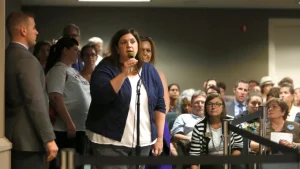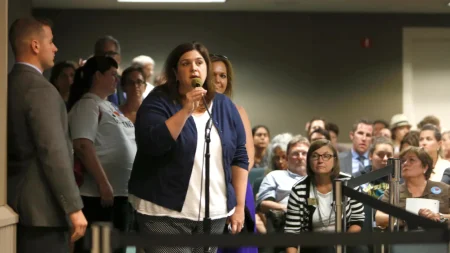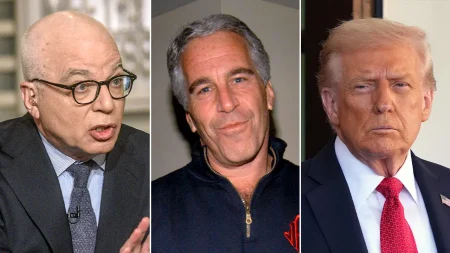Bruce Blakeman Explores Gubernatorial Run with Upstate New York Tour
Nassau County Executive Bruce Blakeman is embarking on a journey beyond his Long Island home base to explore a potential run for governor of New York. Fresh off a convincing re-election victory where he secured a 12-point margin, Blakeman is responding to encouragement from various stakeholders across the state by launching an upstate tour to gauge support for a possible gubernatorial campaign. Beginning in his political stronghold of Massapequa, where he previously launched his successful county executive bid, Blakeman plans to travel through the Hudson Valley and Albany before heading to the North Country – notably the home region of Republican Representative Elise Stefanik, who has already announced her candidacy to challenge Democratic Governor Kathy Hochul.
“At the urging of many people around the state, I am heading up to the Hudson Valley, Capital District and North Country in order to gauge the level of support for a potential candidacy for governor,” Blakeman explained in a statement to The New York Post. His journey reflects both personal ambition and a desire to connect with diverse constituencies across New York State. “I am looking forward to meeting a diverse group of people and hearing from them how we can best save New York,” he added, framing his exploratory tour as a listening exercise to understand the concerns and priorities of New Yorkers beyond his Nassau County base. This approach suggests Blakeman is positioning himself as a candidate who would govern based on direct engagement with citizens rather than relying solely on established political networks.
Should Blakeman decide to enter the race, he would face significant challenges in a potential Republican primary against Stefanik, who has already built considerable momentum. A recent poll published by The New York Post highlights the uphill battle Blakeman would face – Stefanik commands a dominant 74% support among Republican primary voters, while Blakeman currently registers just 5%. This stark contrast reflects both Stefanik’s national profile as a prominent House Republican and Blakeman’s relatively limited name recognition outside of Long Island. The polling suggests that despite his success in Nassau County, Blakeman would need to dramatically increase his visibility and appeal to Republican voters statewide to present a viable challenge to Stefanik’s candidacy.
Stefanik’s early advantage extends beyond poll numbers to include substantial institutional support within the Republican Party. She has already secured endorsements from key Republican figures, including state Republican Party chairman Ed Cox, and has been actively building a coalition of GOP officials, activists, and donors. These endorsements provide Stefanik with both political legitimacy and access to fundraising networks that would be crucial in both a primary contest and a general election against Governor Hochul. For Blakeman, this means that his upstate tour is not merely about introducing himself to voters but also about attempting to convince party power brokers that he represents a stronger alternative to Stefanik despite her head start in the race.
The contrast between Blakeman and Stefanik also represents different strategic approaches to challenging Democratic dominance in New York state politics. Blakeman’s success in Nassau County, a suburban area that has become increasingly competitive, suggests he might appeal to moderate voters and former Democrats who have drifted rightward on issues like public safety and taxation. His local government experience provides him with a record of executive leadership that differs from Stefanik’s congressional background. Meanwhile, Stefanik’s national profile as a staunch defender of former President Trump and her more combative political style might energize the Republican base but could present challenges in a general election in predominantly Democratic New York.
As Blakeman traverses New York State, his journey represents more than just a potential candidate testing the waters – it highlights the strategic calculations Republicans must make as they attempt to become competitive in statewide races in New York. The party faces the difficult task of selecting a candidate who can both secure the Republican nomination and appeal to enough independent and moderate Democratic voters to win a general election. Whether Blakeman ultimately decides to enter the race or not, his exploratory tour signals Republicans’ determination to mount a serious challenge to Governor Hochul in the upcoming election. For voters across New York State, this early jockeying provides an opportunity to consider different visions for addressing the state’s challenges, from economic development and affordability to public safety and government effectiveness.











